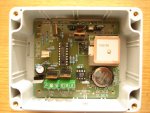Is there any manual that gives a comprehensive description of the memory in the 18M2+ please? I want to know how much of each there is, what overlaps what, plus the life expectancy (write cycles) of each type.
Manual 1 page 52 describes the different types of memory, but it says for example that Table memory only applies to the X1 and X2 parts whereas in Manual 2 under Table it says it applies to 18M2
Where it describes Table memory it seems to imply that it is deducted from available program memory but that is not clearly spelled out, the way the use of EEPROM data is described for the M parts.
EEPROM data is supposedly not deducted from program memory for 18M2+ but that is not well explained.
I think there are the following different types and amounts of memory at present on the 18M2+ (excluding Special Function variables):
- Program flash memory (2048 bytes) 100k rewrites?
- Data memory (EEPROM memory) (512 bytes) ?? rewrites
- Memory accessed via Table (512 bytes) ?? rewrites
- General Purpose variables b0-b27 ?? rewrites
- Storage Variables (peek/poke) (512 bytes) ?? rewrites
Manual 1 page 52 describes the different types of memory, but it says for example that Table memory only applies to the X1 and X2 parts whereas in Manual 2 under Table it says it applies to 18M2
Where it describes Table memory it seems to imply that it is deducted from available program memory but that is not clearly spelled out, the way the use of EEPROM data is described for the M parts.
EEPROM data is supposedly not deducted from program memory for 18M2+ but that is not well explained.
I think there are the following different types and amounts of memory at present on the 18M2+ (excluding Special Function variables):
- Program flash memory (2048 bytes) 100k rewrites?
- Data memory (EEPROM memory) (512 bytes) ?? rewrites
- Memory accessed via Table (512 bytes) ?? rewrites
- General Purpose variables b0-b27 ?? rewrites
- Storage Variables (peek/poke) (512 bytes) ?? rewrites
Last edited:


